Visit the Piton de la Fournaise, the giant meeting, and enjoy a unique and unforgettable experience!
If the island of La Réunion is a paradise for the many tourists who discover it every year, it is thanks to the diversity of its landscapes and activities. But the star of the island is the Piton de la Fournaise, one of the most famous volcanoes in the world! It is part of the National Park and is in this capacity classified as UNESCO World Heritage.
In this article, we explain all its secrets and give you our best tips to visit the Piton de la Fournaise in the best way.
The Piton de la Fournaise, history and geology
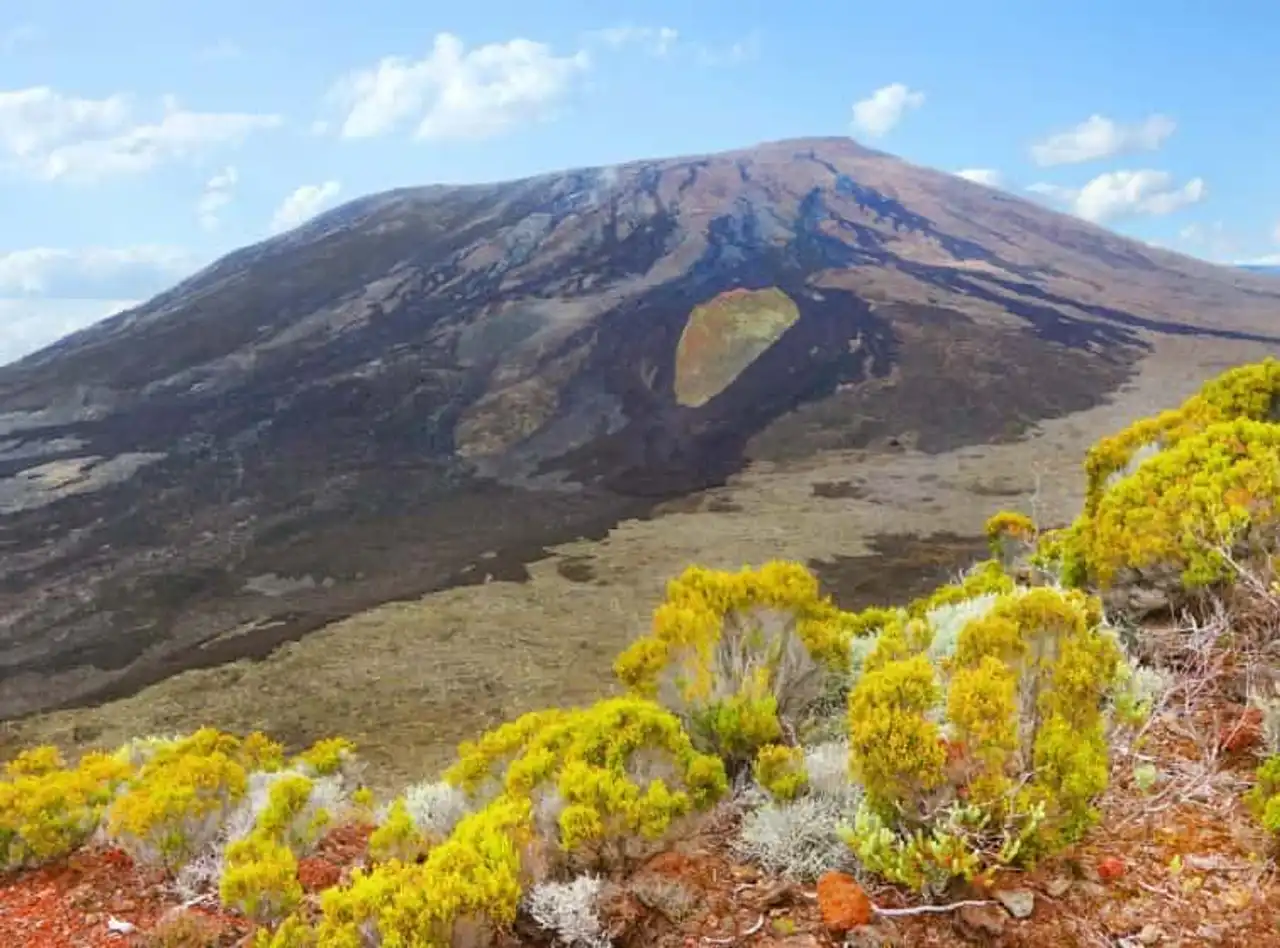
Photo credit: Shutterstock – Kletr
With the Piton des Neiges, the highest point on the island of La Réunion, the Piton de la Fournaise has shaped the island as we know it today. This is the most recent of the two, he would have formed there 530 000 years . If the Snow Piton has been inactive since 29 000 years , the Piton de la Fournaise continues to transform the island at the rhythm of its eruptions. The two volcanoes form the top of a huge cone resting on the ocean floor to 4,000 meters deep . The base of this cone has a diameter of about 200 kilometres , and the island in itself hardly represents 1% the overall volume of the building.
The Meeting is a "hot point", a magmatic center powered by a mantellic panache. During the drift of the tectonic plates, this hot spot has created the Laquedives Islands, the Maldives, the Chagos Archipelago and finally the Mascareignes (La Réunion, Maurice and Rodrigues). The Piton of the furnace is today the highest point of the east of the island to 2 632 meters above sea level . Its mass covers about 26% Meeting.
The Piton de la Fournaise, one of the world's most active volcanoes
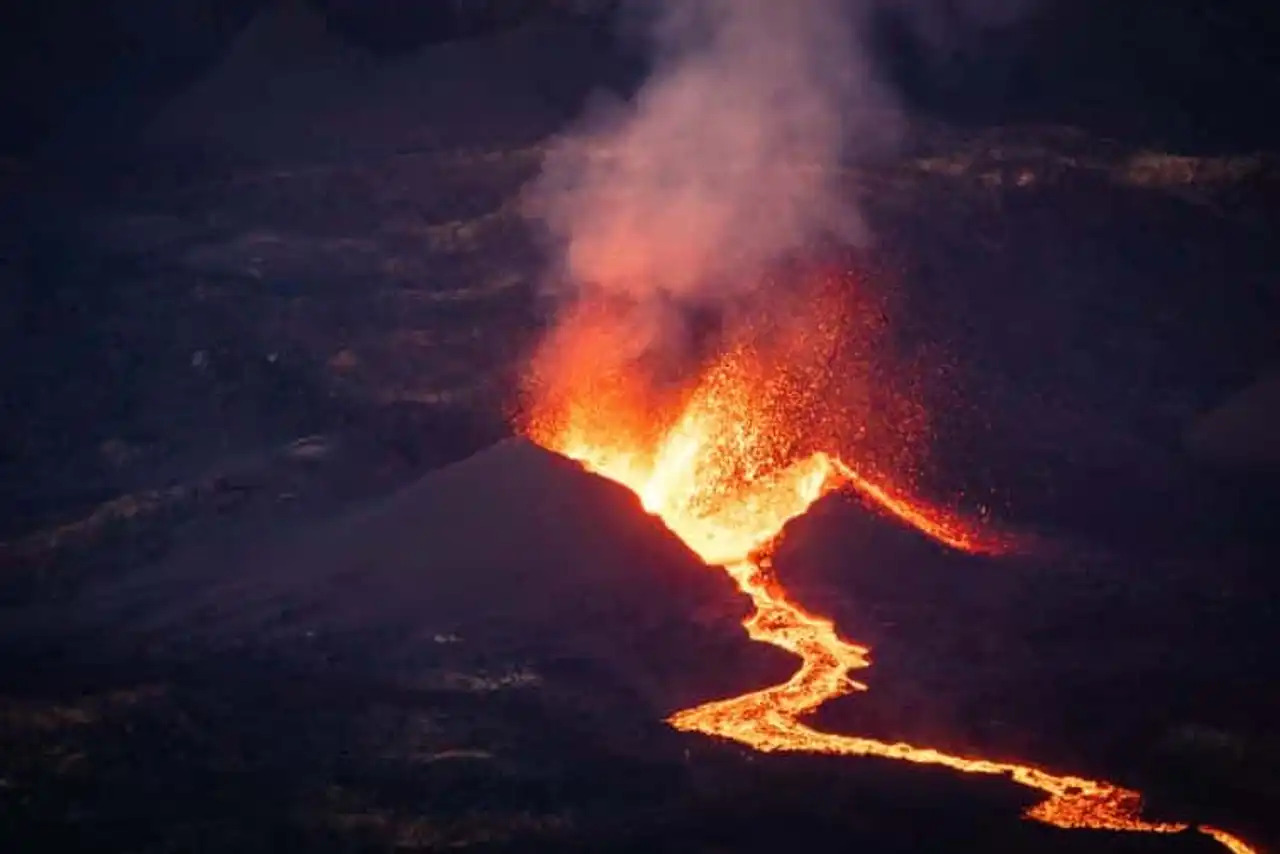
Photo credit: Shutterstock – Zamir Popat
Since the Meeting was inhabited only since the 17th century, the first eruption actually observed is that of 1640. Since then, more 200 eruptions have been identified, of which 44 for the twenty-first century, on average 2 per year ! During a trip to La Réunion Island, you may have the chance to visit the Piton de la Fournaise during a real eruption!
Attention, some eruptions last more than a month, others stop after a few hours. To observe them, you will have to go to the edge of the caldeira or on the lava road. You will be notified to the sound of the "Volcan la pété" on the street or on the television. The eruptions are effusive types, with fountains and lava flows that form and derive the slopes of the volcano.
Visiting the Piton de la Fournaise is one of the best chances to witness a real-time eruption: it is the 3rd most active volcano in the world after the Kilauea to Hawaii (in continuous eruption since 1983) and Etna en Italy . But even when it rests, a visit to the Piton de la Fournaise is always a magical moment and out of time.
The Piton de la Fournaise, a constantly changing landscape
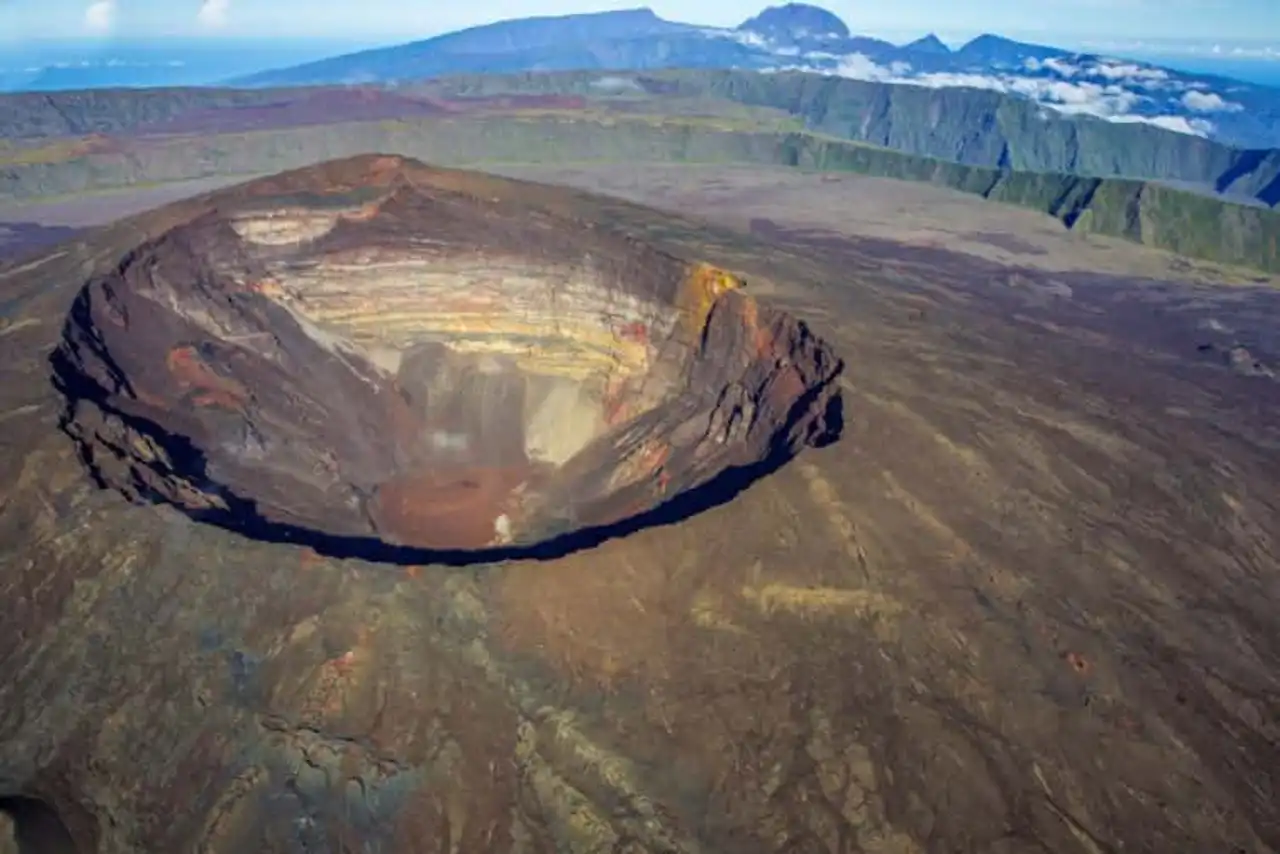
Photo credit: Shutterstock – A. Karnholz
The successive eruptions have created a unique landscape in the world, made of lava, ramparts and craters. The most impressive crater is the crater Dolomieu , formed in 1791 and collapsed sharply during the April 2007 eruption. It is the highest point of the massif, and measure 1 km long for 750 metres wide and 350 metres deep . He's cratered. Bory for his part 350 meters long for 200 meters wide .
These two somital craters are located at the top of a volcanic cone in the middle of a caldeira surrounded by ramparts of a height between 100 and 400 metres . This caldeira is called enclos Fouqué and is generally prohibited from access during eruptions. It is open in the form of horse-riding iron to the ocean where successive lava castings have been directed, forming a desert region called the Grand Brulé .
This entire area is part of the National Park of the Meeting and is classified as UNESCO World Heritage. By taking the lava road, we go through the lava road Grand Brulé and we can identify the successive lava castings that descend from the volcano. The road had even been rebuilt because it had been cut off by the 2007 lava casting. Due to the heat of the ground, this road has been closed for more than a year! When you come to visit the Piton de la Fournaise, have fun spotting the many craters and lava castings and classifying them according to their date of appearance. At every eruption, the massif turns, and that’s what makes the volcano star of La Réunion.
What to see and what to do at the Piton de la Fournaise?
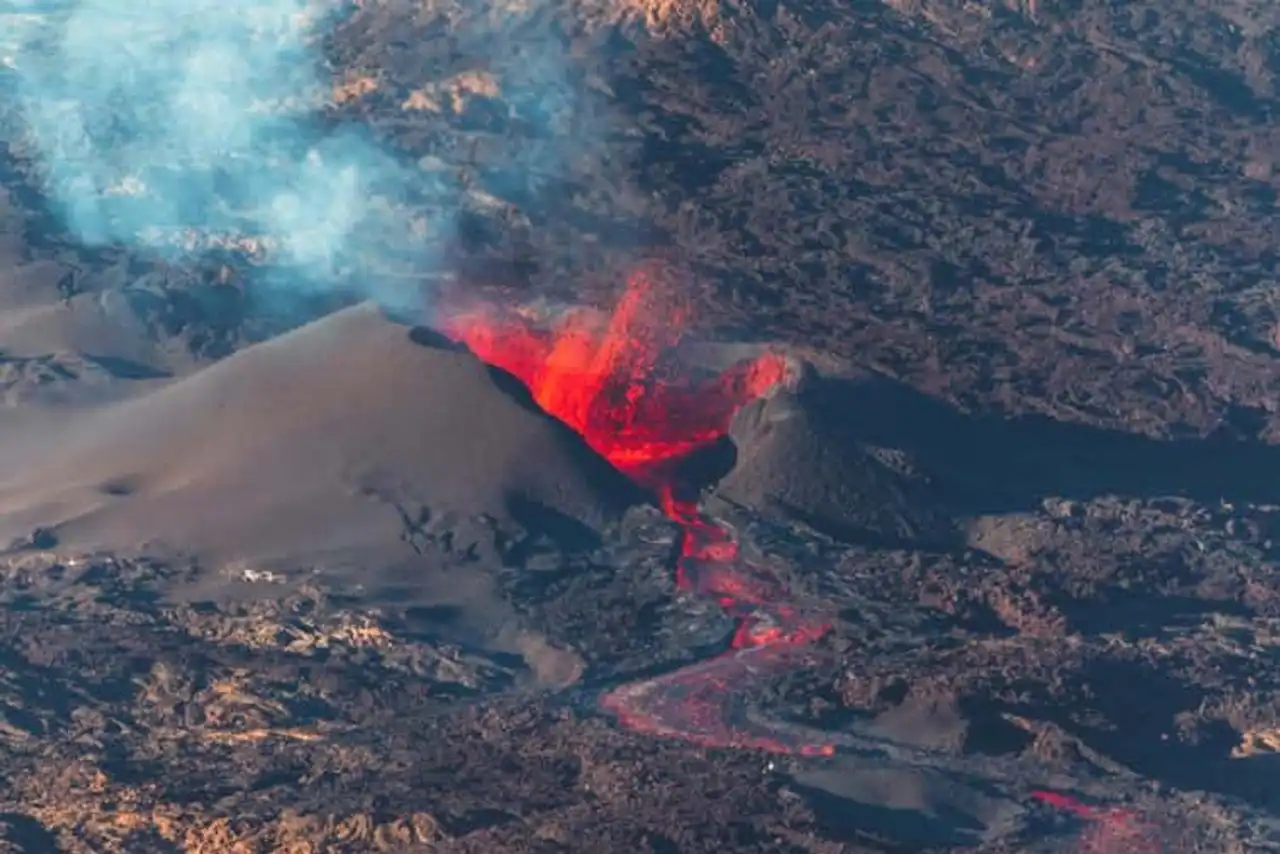
Photo credit: Shutterstock – Zamir Popat
You have many ways to visit the Piton de la Fournaise but the two main attractions remain the Grand Brulé from the lava road and the enclos Fouqué with the summit of the volcano from No Bellecombe . By following the road to the Piton de la Fournaise, stop at the City of Volcano , which retraces his story. It is one of the 4 regional museums of the Meeting, with Kélonia , the museum Stella Matutina and Indian Ocean Decorative Arts Museum .
Following the forest road that leads to the Pas de Bellecombe, you will have many views of the river of the ramparts and then cross the river Sables Plain , a unique landscape or you will feel transported in a lunar landscape. Another activity not to be missed is the discovery of tunnels created during the cooling of the fusion lava.
How to visit the Piton de la Fournaise?
On foot
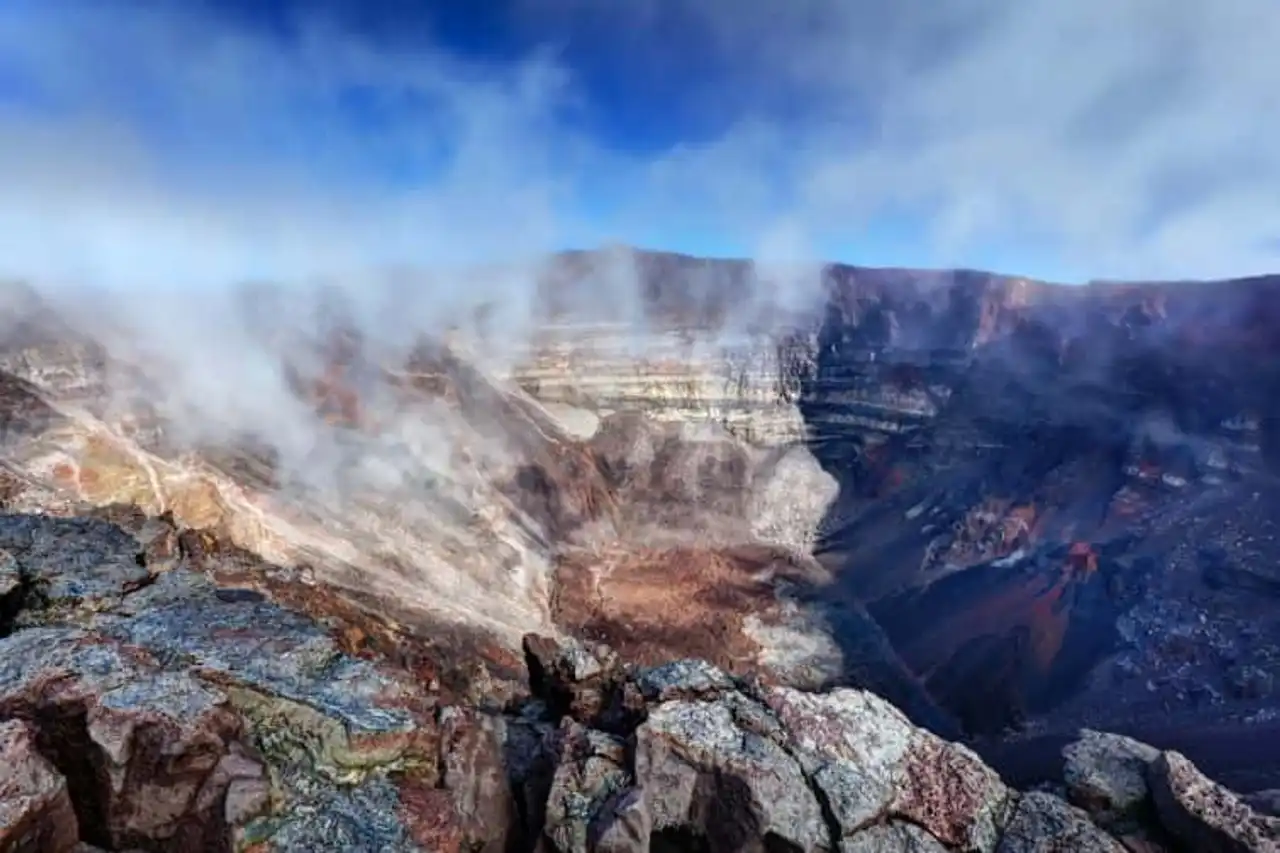
Photo credit: Shutterstock – infografick
To truly feel the telluric force and the power of the volcano, nothing better than a hike from the No Bellecombe to the top of the volcano. You'll walk while 5 a.m. , for a denial alongside an expert guide from the region. The activity is accessible to all, provided you like walking. Ascension is soft, rhymed by the explanations of your companion on geology, fauna and flora and the history of volcano. You will observe several curiosities during your journey, such as chapel of Rosemont and Formica Leo .
The heat that can be strong in the enclosure, plan about 2 litres of water per person and one picnic . Walking shoes , cup-vent , sun cream and hat will be your best allies to fully enjoy the experience. If you can, choose to make this hike early morning . So you will reach the top of the crater Dolomieu for sunrise and enjoy one of the most beautiful sunrises in your life. The return will also be more pleasant, before the heat is too strong. For up there, "sun y pok" as they say in Creole!
ULM
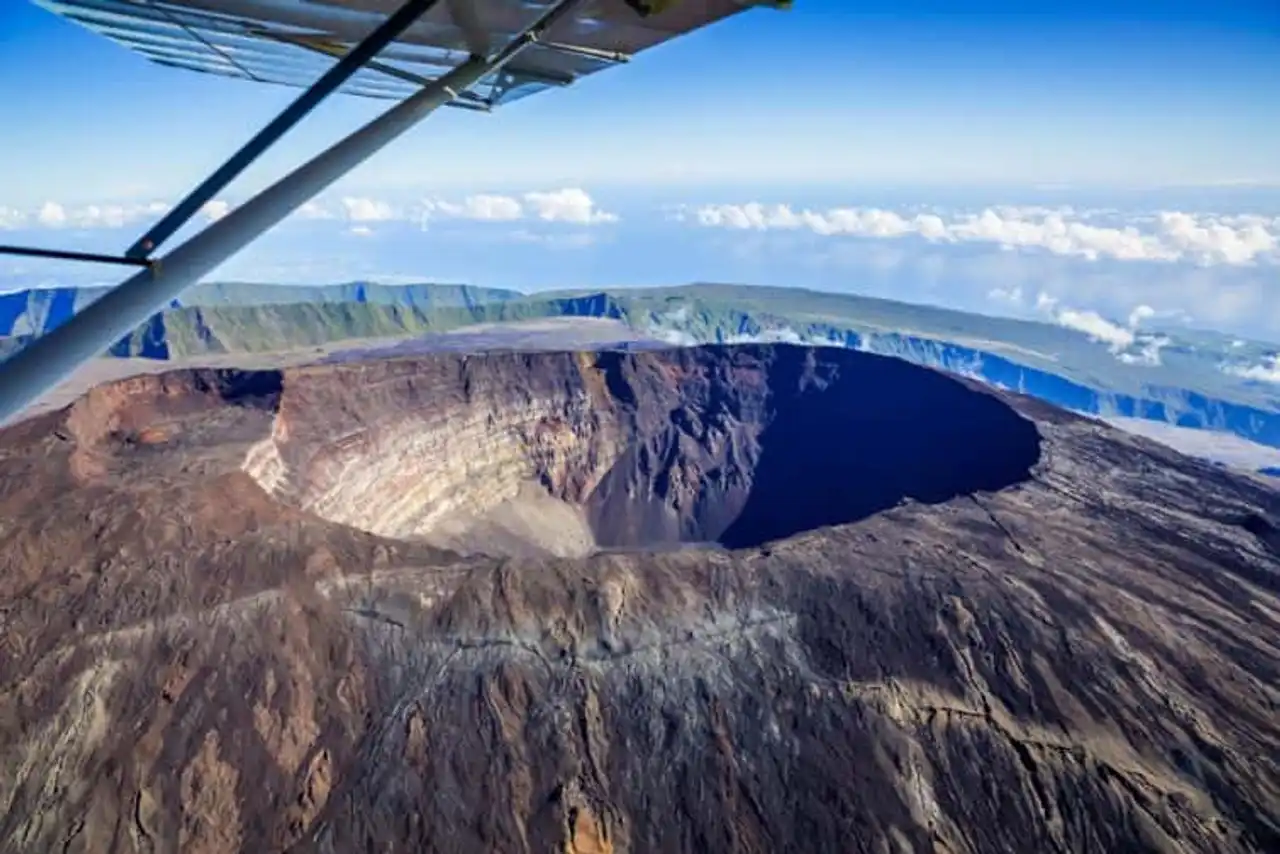
Photo credit: Shutterstock – A. Karnholz
The ULM is another way to discover the volcano, this time from the air. From Saint-Pierre , you will follow the slopes of the volcano to overfly the enclosure and the Dolomieu crater. A good way to represent the massif as a whole. You will be alone with the pilot and will be able to communicate with him through a radio helmet, the opportunity to ask him all the questions you want.
Helicopter
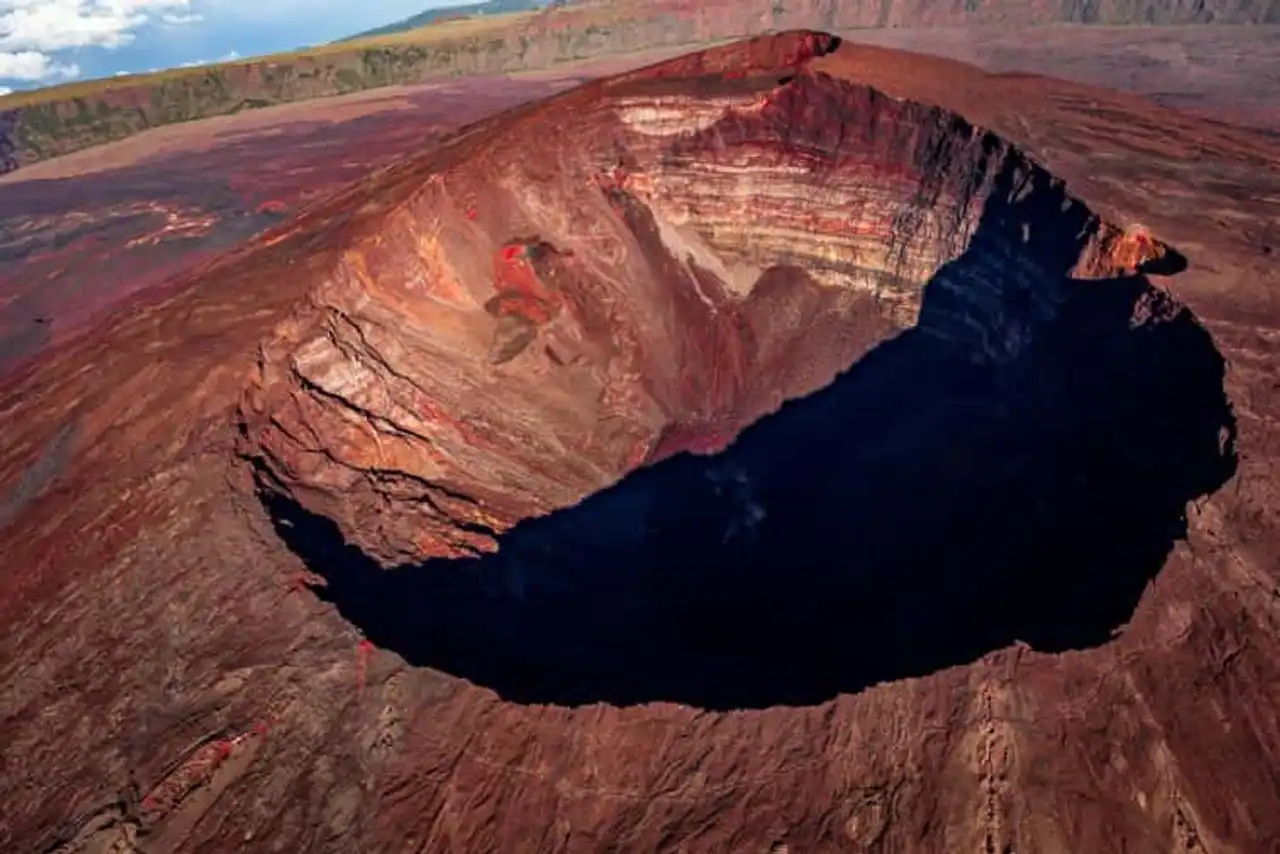
Photo credit: Shutterstock – Isogood_patrick
The helicopter is one of the flagship activities of La Réunion Island and visiting the Piton de la Fournaise in this way is always an unforgettable moment. From the airport Pierrefonds near Saint-Pierre, you will start your ascent with as a point culminating the Volcano summit.
You will then fly over it Sables Plain , descend into the valley of the Rivière des Remparts then pass over Langevin stunts . As the helicopter is very handy, your experienced pilot will be able to take you to the nearest crater for breathtaking views! Coffee, tea and cakes are included. At the landing, a flight diploma will be given to you to immortalize this moment.
Horse riding
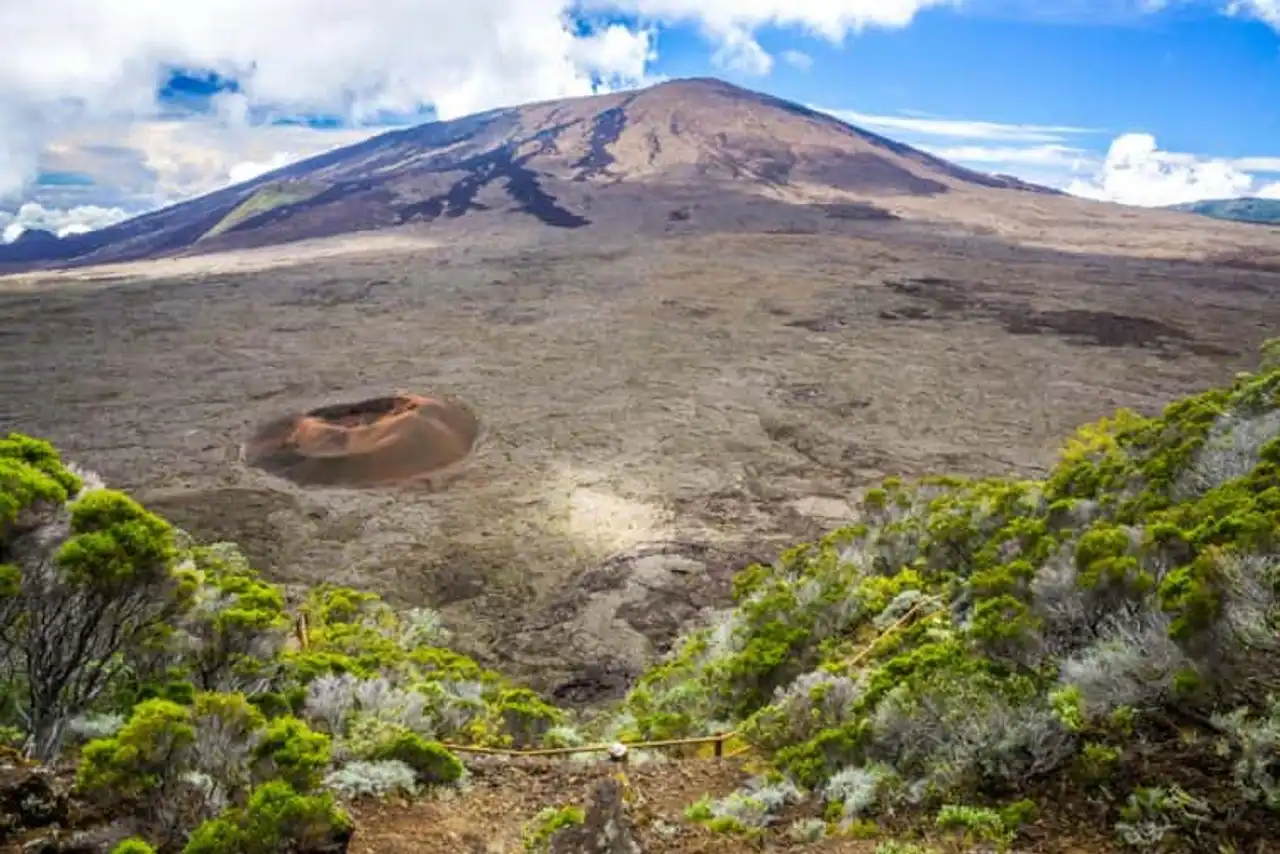
Photo credit: Shutterstock – A. Karnholz
This original way to visit the Piton de la Fournaise is reserved for experienced riders. The walk lasts full day . If you are able to step up, trot, and galop, it is certainly one of the best ways to discover the volcano. All horseback riding equipment is provided, you will only have to follow your guide, hair with winds in extraordinary landscapes.
In speleology
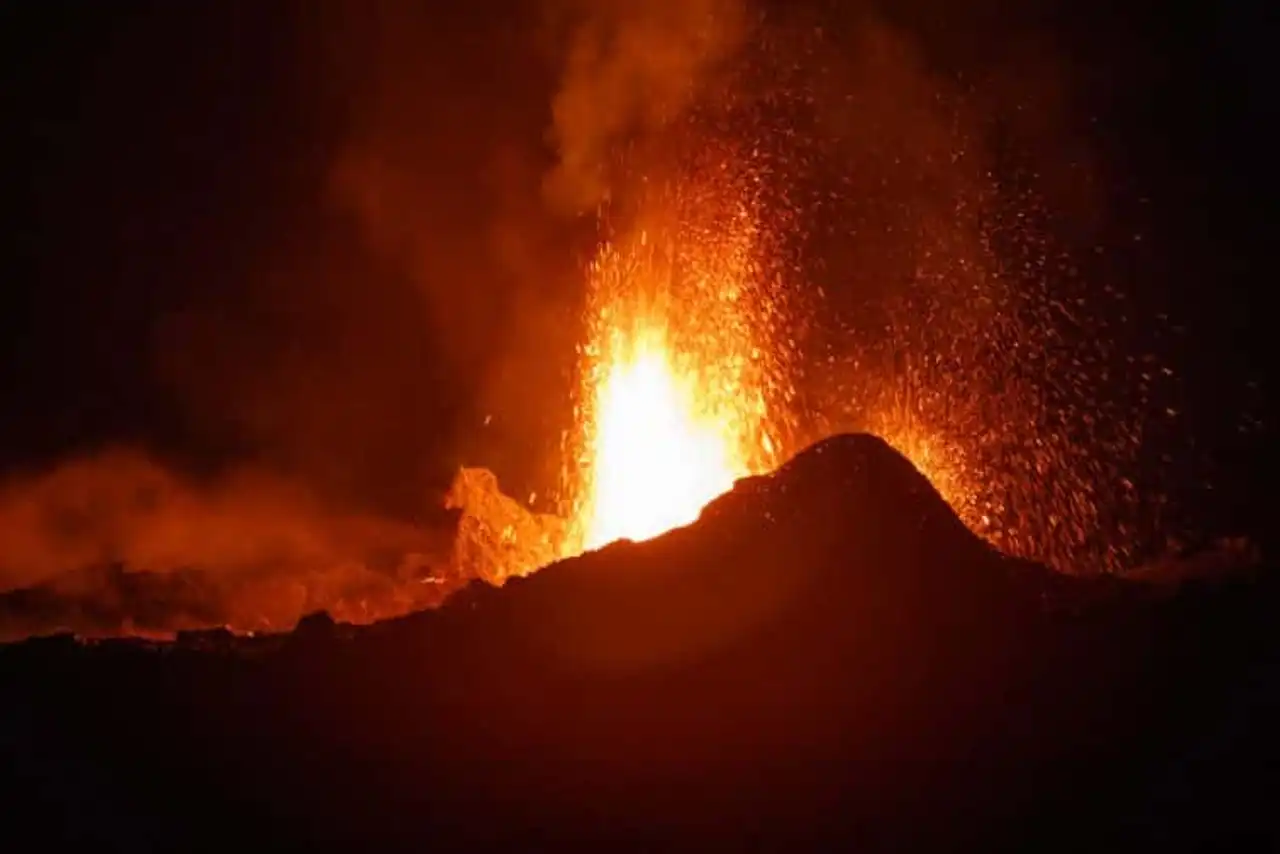
Photo credit: Shutterstock – Zamir Popat
Combine hiking and speleology with this day of activities proposed by Rando Volcan . You will join your specialist volcanology attendant on the parking lot of the No Bellecombe then you will launch on the volcano. After reaching the main crater at the top, you will reach the crater Kapor .
You can observe the remains of the July 2015 eruption before entering the lava tunnel created by the 1998 casting. You will observe impressive stalactites and stalagmites while initiating the basic techniques of speleo.
How to get to the Fournaise Piton?
By car
From the north and east
You will first borrow the National road 2 up to Saint-Benoit , then the RN3 , also called "Road of the Plains" towards La Plaine des Palmistes . A little before arriving Tampon , in the village Bourg-Murat and at the City of Volcano , you will fork on the Volcano forest road . During 20 kilometres , you will walk on a mountain road that rises gradually through breathtaking landscapes.
After a few corners between meadows and forests that could remind us of the Massif Central, one leads to the point of view of Beef Nose . Don't miss stopping to enjoy the panoramic view of the river Remparts . Then take the road that turns into a track when you arrive in the Sables Plain . You stay. 6 kilometres to be explored in an unusual lunar landscape. Be careful, the track is not in very good condition. If it’s possible to travel in a tourism vehicle, you’ll be quieter at the wheel of a 4×4 . At the end, you reach the parking lot at the No Bellecombe , starting point of the hike to the top.
From the south
If you are based in the south (to Saint-Pierre and Saint-Joseph) or in the west (in the region of Saint-Gilles-les-Bains and Saint-Leu), you will follow the road N1 until Saint-Pierre then the RN3 towards the Tampon. At the intersection with the City of Volcano turn right and follow the forest road. The end of the route is the same as coming from the north, the route being the only access to visit the Piton de la Fournaise by car.
Are there combined visits?
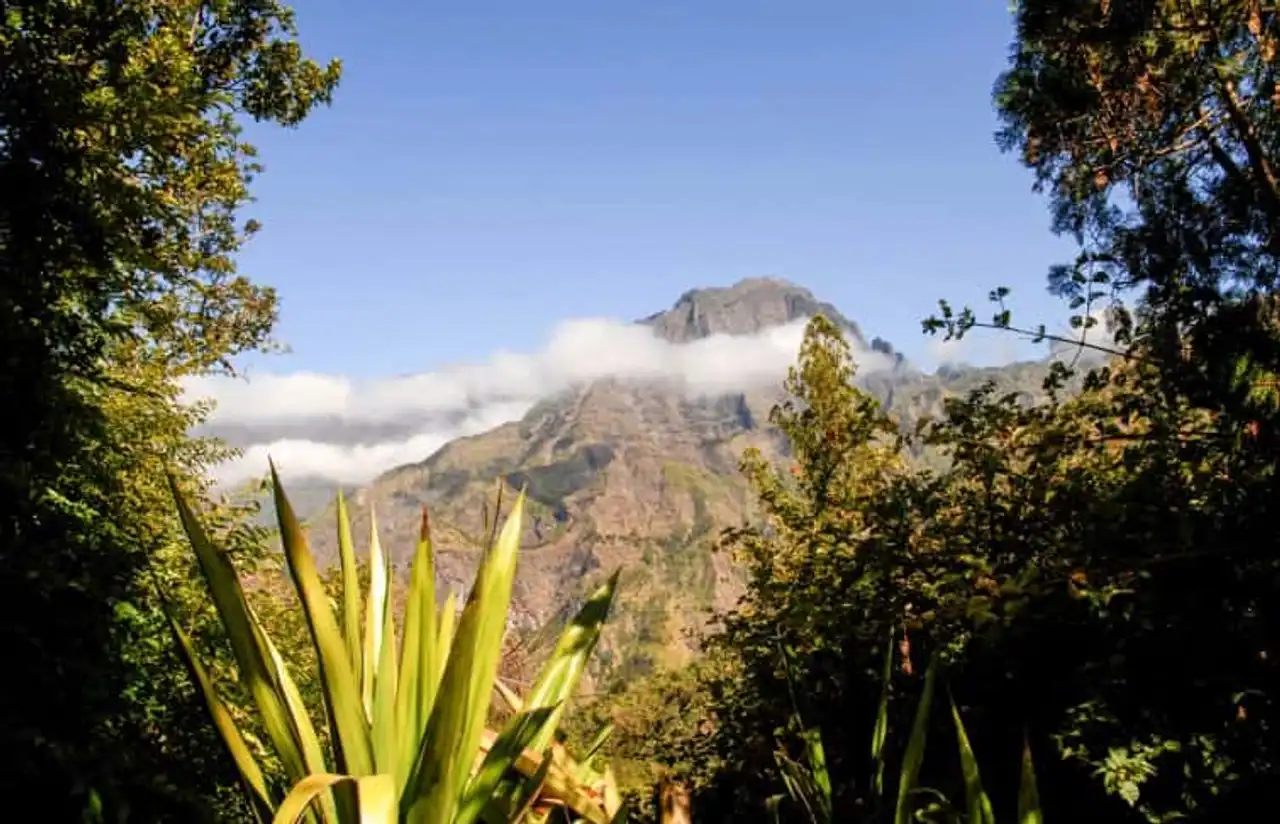
Photo credit: Shutterstock – PHILIPIMAGE
To visit the Piton de la Fournaise in an original way, opt for this combined visit that combines the discovery of the volcano and the culture of the meeting. You will go first to No Bellecombe taking the forest road where you will enjoy the many views. You will then go down to Saint-Pierre to taste a typical Creole lunch.
Your afternoon will be dedicated to the visit of the museum La Saga du Rhum . At the heart of an ancient family distillery, it retraces the joint history of the Island of Meeting and the production of rum. You will learn the methods of distillation, the cultivation of sugar cane and will have a small tasting to finish.
- A day at the Piton de la Fournaise and visit the Rum Museum
The right addresses
Loger
There are many addresses where to stay near the Piton de la Fournaise. Between cottages, guest houses and Airbnb , we present our selection of heartburns to sleep near the volcano.
Gîte du volcano
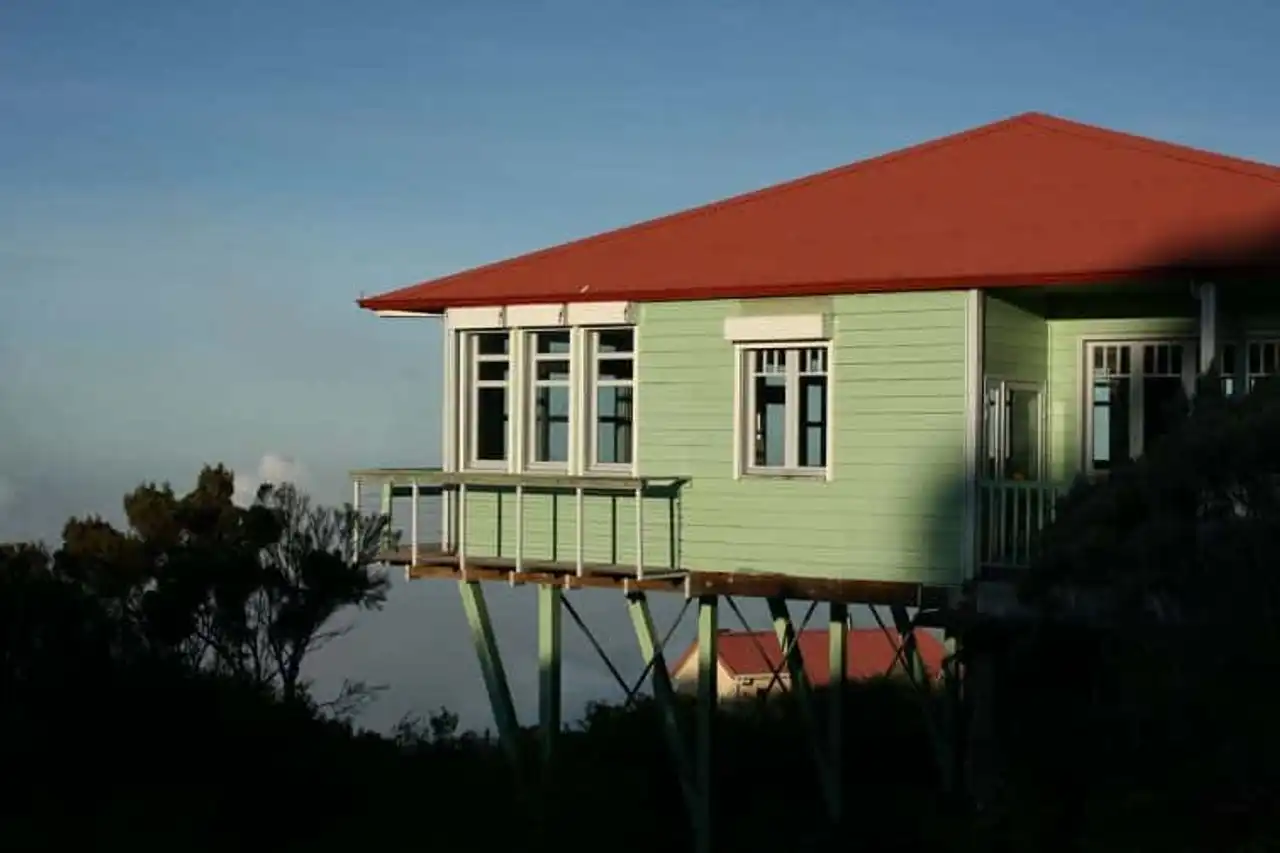
Photo credit: Wikimedia – Thierry Caro
This lodging is the closest accommodation to visit the Piton de la Fournaise. It is 2 km away by car from the parking lot of Pas de Bellecombe and 700 meters walk from the Pas de Bellecombe himself. You can literally go hiking from the cottage door and above all come rest there after your ascent. In addition to offering sleeping accommodations for 57 people in dormitories, it offers a restaurant service morning, noon and evening on reservation.
Chalet Lemondederay
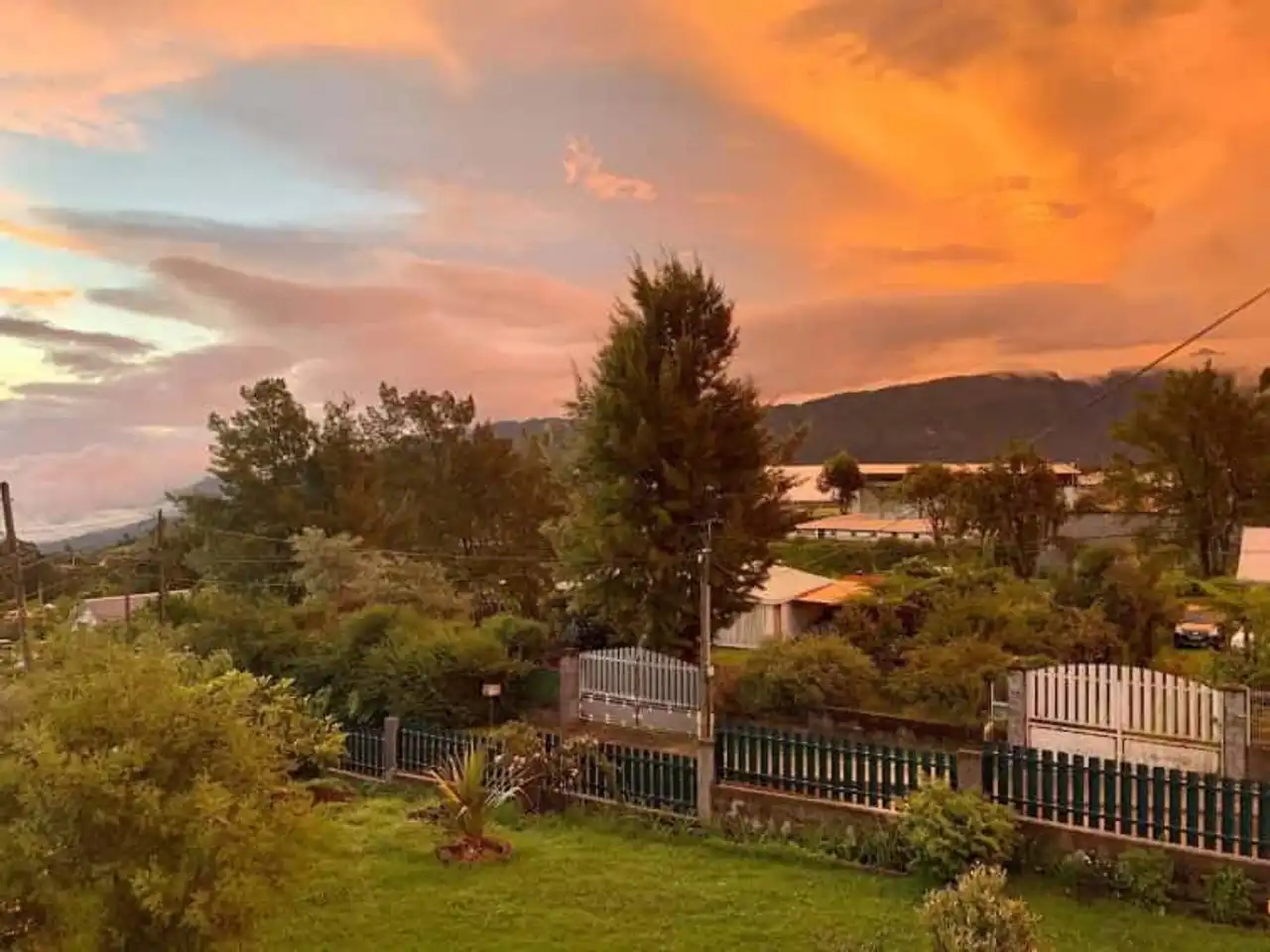
Photo credit: Airbnb
This small cottage is located in La Plaine des Cafres . It is located in a pretty small garden, accessed to the owners' housing but with a separate entrance. Close to all shops, it will allow you to visit the Piton de la Fournaise in 50 minutes and the rest of the region independently.
The Helen’s home
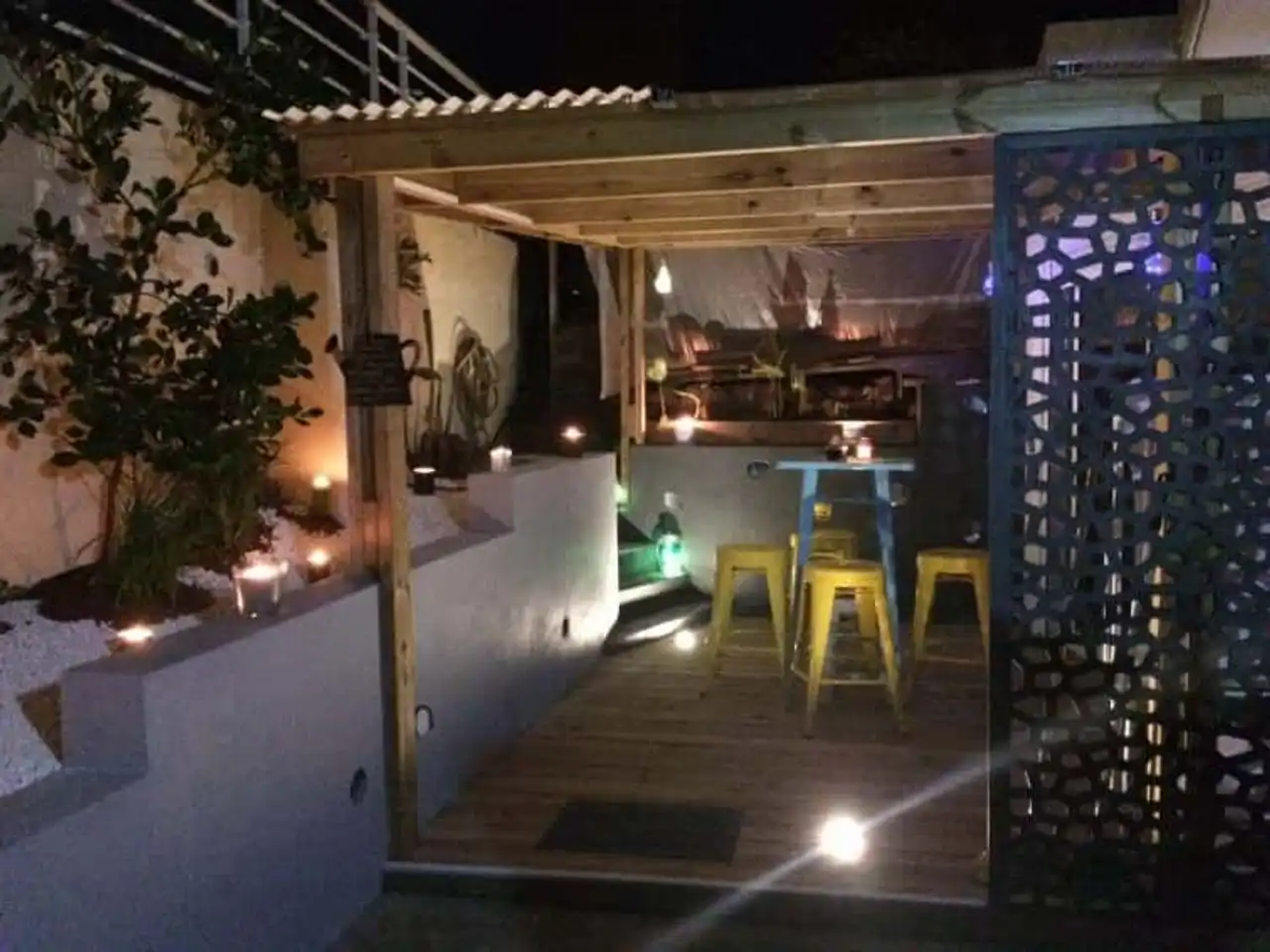
Photo credit: Airbnb
Located in La Plaine des Cafres , this apartment can comfortably accommodate 4 passengers. Equipped with a terrace and a bathroom with bathtub, it offers all the necessary comfort for a stay on the slopes of the volcano.
Volcano side
This bed and breakfast table and located in Bourg Murat for easy access to City of Volcano and the forest road. Convivality and authenticity are the slogans of this establishment. Four double rooms and a family suite for 4 people await you for a night in the greatest comfort. On reservation, you will also enjoy a typical Creole meal.
Volcano relay
3 bedrooms with private bathrooms arranged in an authentic Creole box, here is what makes the charm of Relais du Volcan . Located in La Petite Ferme , this haven of peace will be your basis to visit the Piton de la Fournaise but also to discover the way of life of the "highs" of La Réunion.
Restaurants
Chez Guilaine

Photo credit: Shutterstock – Jerome.Romme
A great place to discover Creole cuisine. The welcome is warm and the very hearty dishes, the ideal to get out before or after a hike in the volcano! Traditional rougail sausages, jacque mud and patate cake are accompanied by other options such as grilled espadon as well as succulent burned creams.
Ti Kan
Traditional Creole Ambiance in this restaurant-snack that offers meeting caris but also caps and samoussas. Here we cook with wood fire and the owner doesn’t hesitate to come share the coffee with you. A must-see step by descending from the volcano!
The spots
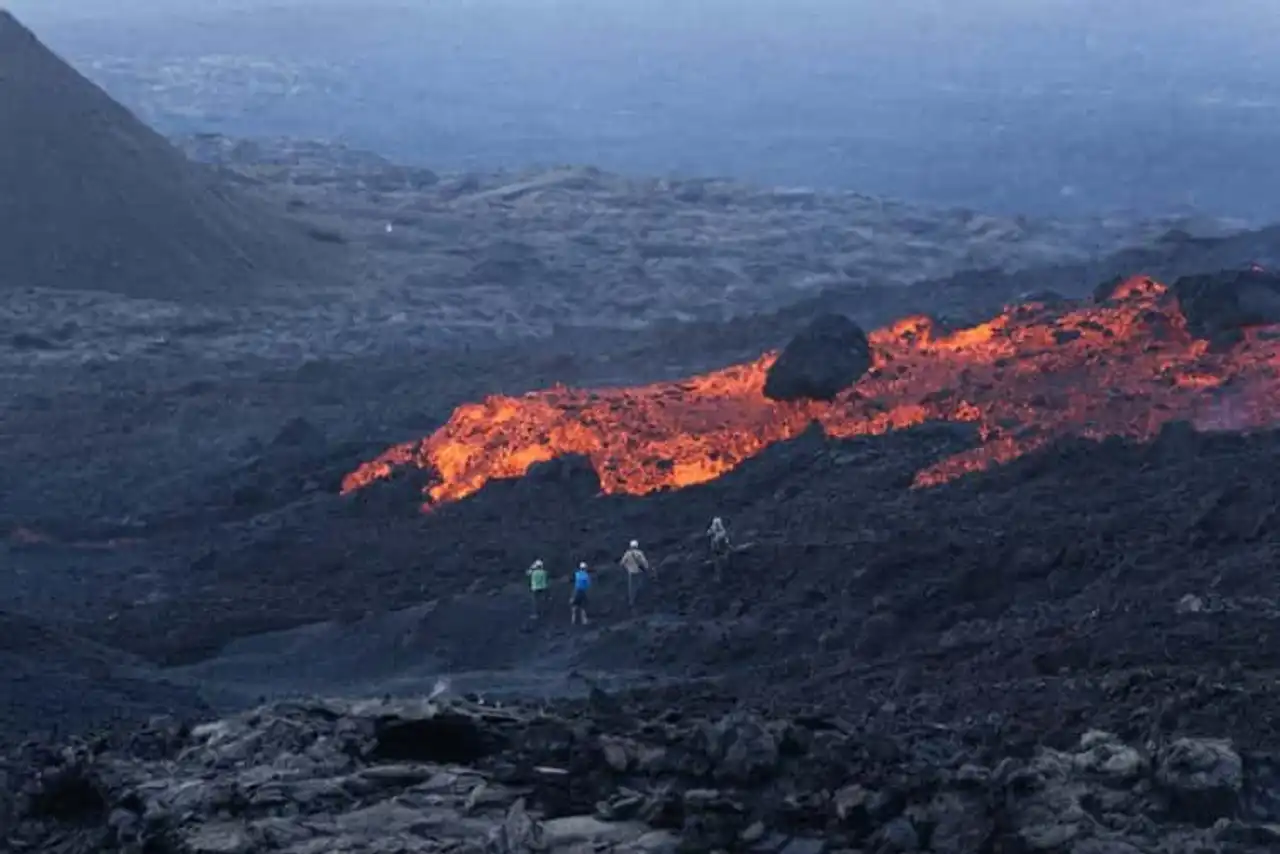
Photo credit: Shutterstock – Vincent Dunogue
The City of Volcano
If you come to visit the Piton de la Fournaise, the City of Volcano is a must-have stop. Located in the village Bourg Murat , this museum traces the history of the volcano from its origins to the eruptions of the twenty-first century, through its first ascent. It allows you to better understand the meeting giant before taking the hike to its summit.
The Piton of Bert
The Piton de Bert is the best place to visit the Piton de la Fournaise in case of eruption. At the edge of the ramppart, it offers a breathtaking view of the enclos Fouqué , often forbidden to the public during the eruptions. From the parking lot Foc-Foc , count 3 hours walk back . Most visitors walk the trail at night to enjoy the beauty of the lava fountains.
Laves Road
This road southeast of the island is the best way to admire the Grand Burn and the lava castings that have devalued the sides of the volcano to the sea. Route des Laves snakes between Saint-Philippe and Sainte-Rose, and will make you cross more spectacular landscapes than others.
Notre-Dame-des-Laves church
This church was renamed after the eruption of 1977. The lava castings miraculously spared it, and the solidified volcanic stone surrounding the building can still be admired. You can visit it by visiting the village of Piton-Sainte-Rose.
So, ready to make the big jump and to come discover “the intense island” and visit the Piton de la Fournaise?
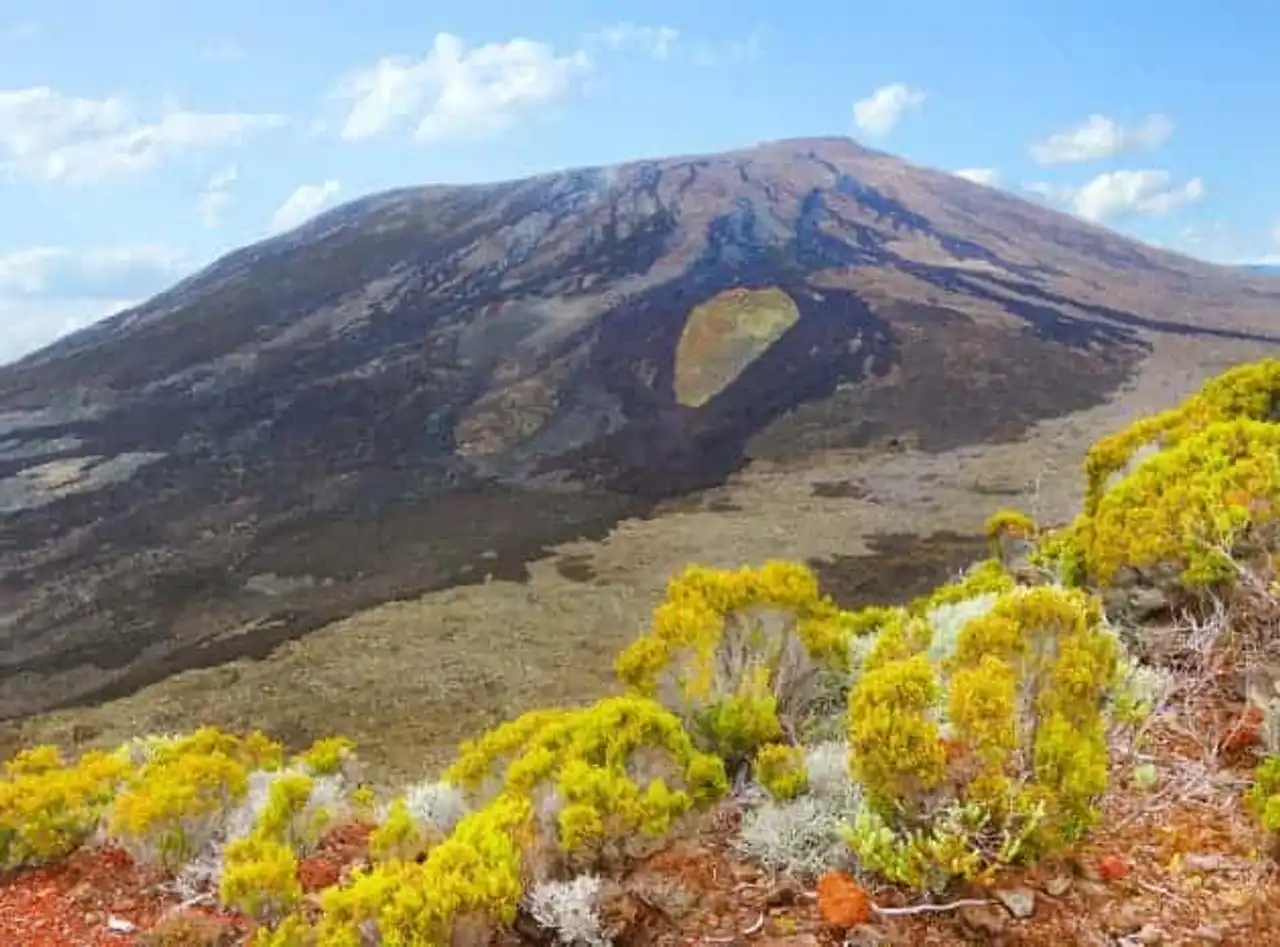




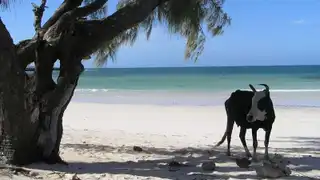

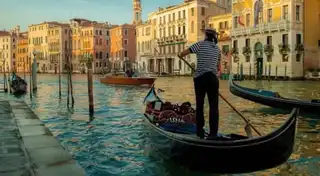
Loading comments ...